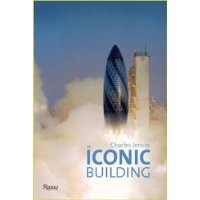Iconic Building
| 商家名称 |
信用等级 |
购买信息 |
订购本书 |
|
|
 |
Iconic Building |
 |
|
 |
Iconic Building |
 |

基本信息·出版社:Rizzoli
·页码:224 页
·出版日期:2005年09月
·ISBN:0847827569
·条形码:9780847827565
·装帧:精装
·正文语种:英语
内容简介 Charles Jencks, the leading architectural critic and writer, takes on "trendiness" in architecture: namely the rise of the "iconic building," instantly famous and distinctively recognizable structures like Norman Foster's "Gherkin" in London or Daniel Libeskind's Ground Zero designs in New York. Although there have always been buildings built to be instant icons such as palaces and cathedrals, Jencks sees this latest trend as being fueled by the real estate industry's thirst for profit and architects' outsize egos. Since the debut of Gehry's Guggenheim Bilbao, a roster of international architects has created iconic buildings that court publicity and controversy in equal measure. Some iconic buildings are successful creations that fulfill their contradictory requirements, while others make the public and the critics wince. In addition to Foster, Gehry and Libeskind, Jencks also discusses recent works by Peter Eisenman, Zaha Hadid, Rem Koolhaas, and Renzo Piano.Anyone interested in contemporary architecture and the direction of urban design will be interested in Jencks' witty, irreverent and sympathetic insights into how buildings can become good architecture that enhances the cityscape-and are truly iconic.
作者简介 Charles Jencks is the author of the bestselling The Language of Post-Modern Architecture, The Garden of Cosmic Speculation, The Architecture of the Jumping Universe, Le Corbusier and the Continual Revolution in Architecture, and many others. He has taught at UCLA and now divides his time between London and New York making frequent appearances as a lecturer.
专业书评 From Publishers Weekly Starred Review. The cover of Jencks's snappy survey of the post-Bilbao boom in flamboyant public building has a Photoshopped image of Norman Foster's Swiss Re headquarters in London launching itself like the rocket ship it resembles, complete with flaming thrusters and billowing smoke. The cover's combination of satire, affection and awe sets the tone for the book. Neither a pious jeremiad nor a jargon-ridden manifesto, Jencks's volume is more interested in outsize buildings and personalities than in prescriptions and complaints. And a couple of the architects Jencks (
The New Paradigm in Architecture) discusses—including Daniel Liebeskind and Will Alsop—are allowed to answer back, in interviews with the author that are sometimes sparring and combative. The most sustained and brilliant of the book's seven sections is on the still-evolving plans for the site formerly occupied by the World Trade Center. Here Jencks traces the charged intersection of politics, finance and media with lucidity and healthy cynicism. In addition to the numerous expected photographs of famous buildings, the book also includes Jencks's own crude but vivid collages and a fascinating series of white-on-black drawings that wittily depict the underlying forms of some of the buildings under discussion. Brimming with critical energy, this volume often feels as big, shiny and in-your-face as the buildings it describes.
(Oct.) Copyright © Reed Business Information, a division of Reed Elsevier Inc. All rights reserved.




